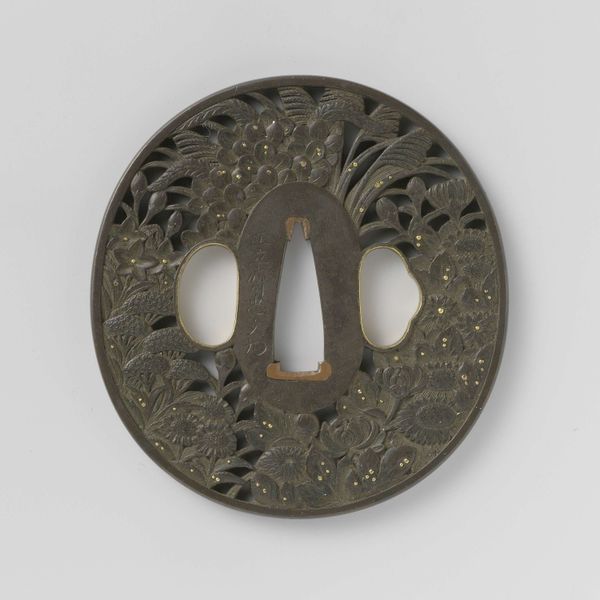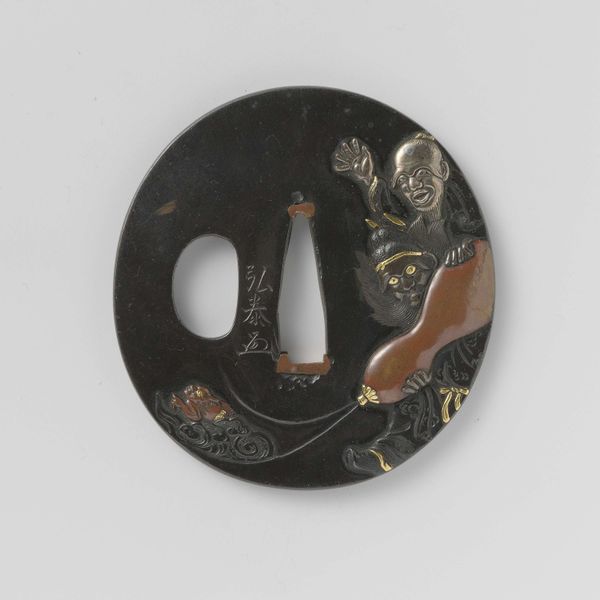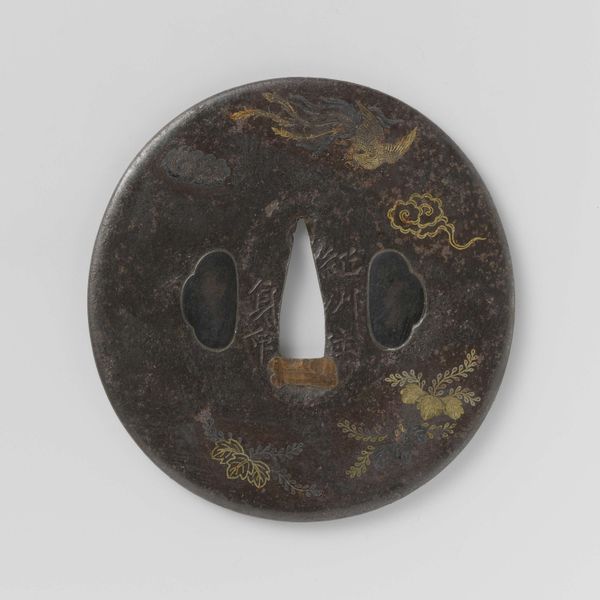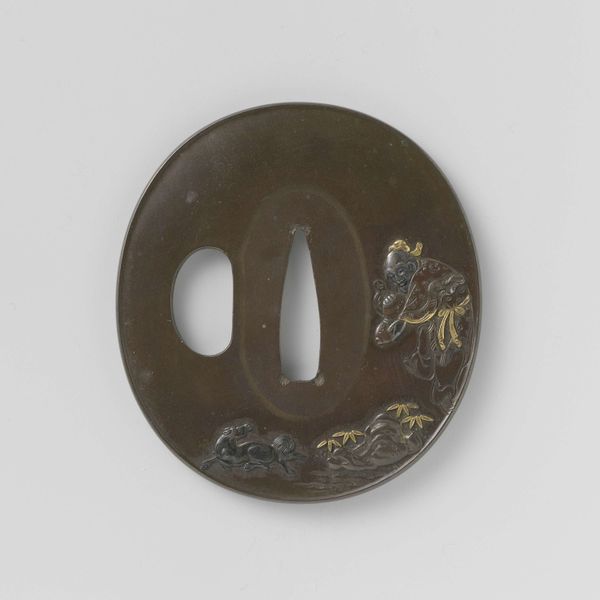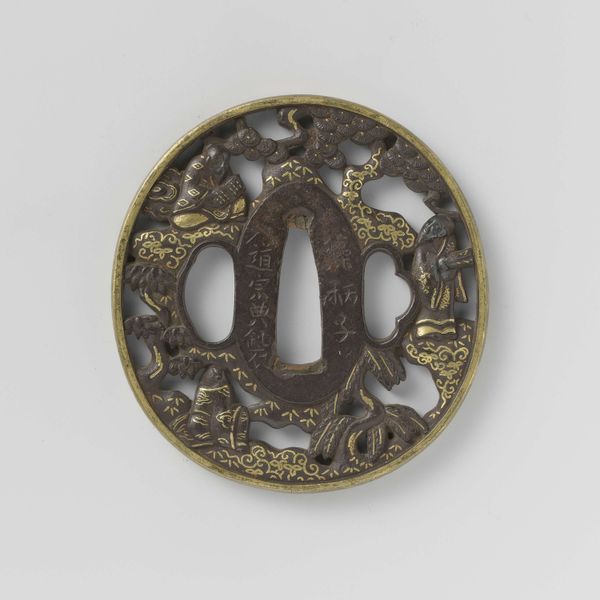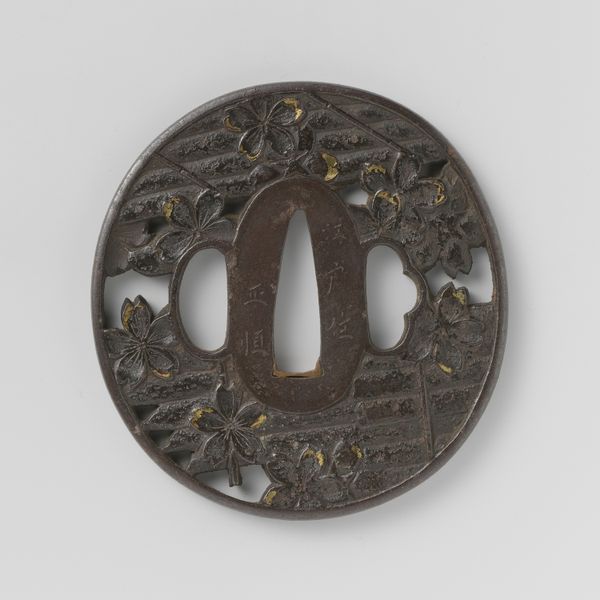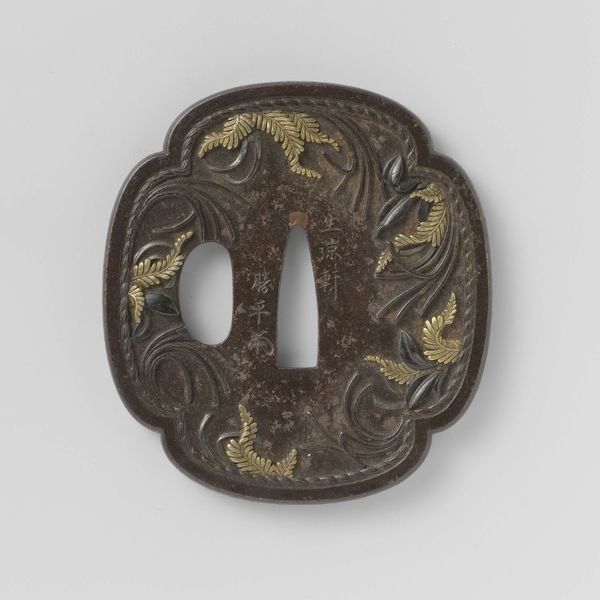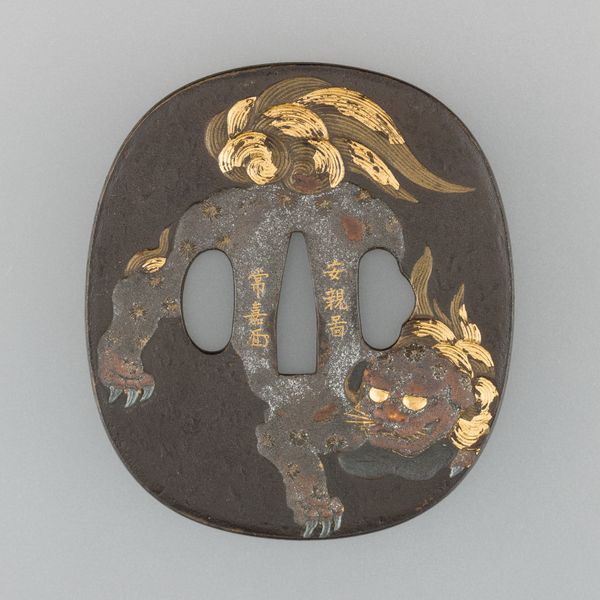
carving, metal, engraving
#
carving
#
metal
#
asian-art
#
landscape
#
ukiyo-e
#
decorative-art
#
engraving
Dimensions: height 6.6 cm, width 6.2 cm
Copyright: Rijks Museum: Open Domain
Editor: We're looking at a Hand Guard, made with metal carving and engraving sometime between 1800 and 1850 by Okada Masatoyo. The metalwork has a muted palette, but the landscape details—the pine trees and water—suggest a calm, idyllic scene. What's striking to you about its function as decorative art within a broader social context? Curator: This hand guard, or tsuba, exists at the intersection of martial culture and artistic expression. Its function was primarily practical, protecting the swordsman's hand. However, the decorative landscape elevates it beyond mere utility. Consider how the ukiyo-e influence transforms this object. Do you see the connection between mass-produced prints and this singular piece of craftsmanship? Editor: I do see the ukiyo-e influence, definitely in the landscape depiction, though it's fascinating how it translates onto metal. I suppose both forms made art more accessible, ukiyo-e to the masses and the hand guard to a specific warrior class. Is there something to say about how social status impacts artistic patronage? Curator: Precisely. The samurai class held significant cultural power, shaping artistic trends and acting as patrons. Tsuba, like this one, became canvases for expressing status and refined taste. How might the depiction of such tranquil landscapes challenge or reinforce societal expectations of a warrior's persona? Is it merely decorative, or does it project a desired image of serenity and control? Editor: I guess it complicates the image of the warrior, juxtaposing it with scenes of peace, suggesting an ideal of cultured refinement alongside martial prowess. It moves beyond simply deflecting blades. It reflects a whole way of life. Curator: Precisely. Its value lies in that subtle communication of identity and societal aspiration, reflecting the nuanced relationship between art, power, and identity in 19th-century Japan. What started as protection evolved into a canvas for conveying cultural and social ideals. Editor: It really makes me appreciate the depth embedded within seemingly simple functional art! Thank you!
Comments
No comments
Be the first to comment and join the conversation on the ultimate creative platform.
